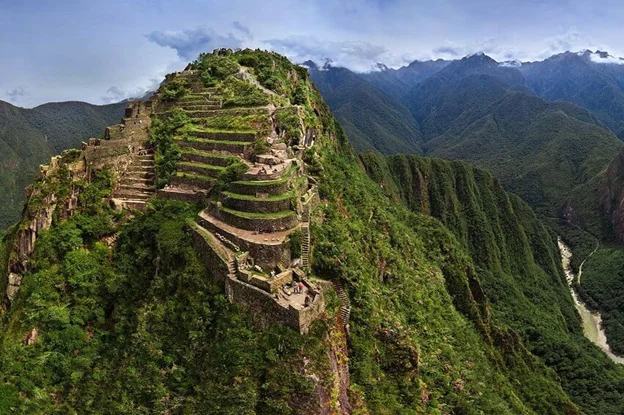
10 Must-See Temples in Machu Picchu: A Sacred Inca Journey | Travel Blog
The mythical citadel of Machu Picchu, with hundreds of years of history embedded in its stone buildings, is the only God most praised within its walls. The sacred mountains and winds converge with the equally important worship of the earth. This simple guide will show you 10 temples within the citadel that you can't miss.
Table of content
Discover the Spiritual Significance of Machu Picchu’s Temples
The Inca people had a deep spiritual sense, this is demonstrated by the number of ceremonial temples in Machu Picchu. They connected the Inca people with the natural world and cosmic forces through stone carved structures.
Machu Picchu’s temples align with the sun, stars, and sacred mountains. This precise alignment allowed priests to track solstices and equinoxes, guiding agricultural and ritual calendars. The spiritual energy of these temples still resonates in this World Heritage Site today.
The Inca civilization believed in three cosmic worlds: Hanan Pacha (the upper world), Kay Pacha (the living world), and Uku Pacha (the underworld). The Inca people took great care to define the location of these temples.
Every detail influenced their location and design. The trapezoidal windows clearly connect the view of Machu picchu and Huayna Picchu, this is how deep Incas thought their espiritual sites were. The connection between heaven and earth is present for their symbolic approach.
Many sacred sites in Machu Picchu demonstrate the worship of Pachamama, Mother Earth, honoring nature. The most important temples carved into rock were designed to communicate with the Gods. The Incas believed that they came from the underworld, "the world of the dead", arrived at the "world of the living", and finally transcended to the world of the Gods.
That is why the connection to the sun, the moon, the lightning, the apus, all of them deities, had to be constantly maintained through the Temples. It has been proven that the stones are joined together without the presence of mortar.
Architectural Symbolism of Machu Picchu’s Temples
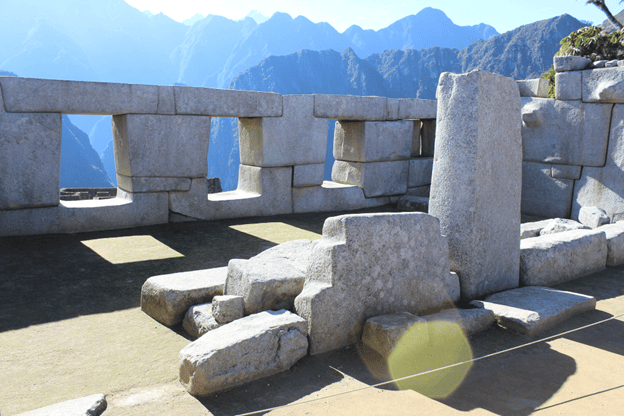
The architecture of temples in Machu Picchu demonstrates masterful engineering and deep symbolism. Each stone fits perfectly without mortar, showing advanced knowledge and sacred craftsmanship. This technique ensured the structures could withstand earthquakes and remain sacred centers.
Trapezoidal doors and windows are a signature feature of Inca archaeological sites. This shape represents stability and is often linked to spiritual portals. The ancient Incas cultivated a high level of development by harmonizing each place they built with the spiritual philosophy they practiced. This context demonstrates the enormous value they placed on the detail of framing each stone perfectly without invading the terrain where it stood.
The Sun Temple is very close to Huayna Picchu, a testament to its significance. A carved altar for rituals and niches welcome visitors to learn how the Inca people celebrated their ceremonies.
Theinca trails that run throughout the citadel of Machu Picchu were meticulously designed to connect each sacred temple. This entire network of temples gives us clues as to how important it was for their culture to connect with their deities. For them, these deities were the providers of all existence at all levels.
This sacred Inca journey uncovers how the past still inspires awe and respect for the natural and spiritual worlds. Ancient inca spirituality developed a big part of their culture.

Exploring the Architecture and Symbolism of Inca Sacred Sites
The temples in The Lost City of the Incas showcase the remarkable architectural skill of the Inca civilization. These structures feature precise stone carving, fitting massive stones without mortar. This technique created durable buildings that have survived centuries of natural wear.
How did the Incas manage to build buildings that stood the test of time? Well, they used trapezoidal geometry, seen in windows. These shapes provide great stability in extreme situations like earthquakes, for example.
The Incas culture had a very deep spiritual development. They managed to locate their ritual sites in such a way that they were aligned, for example, the mountains of Machu Picchu and Huayna Picchu mountain. Each temple’s placement supports cosmic balance and ritual significance.
The stone carved walls often show intentional asymmetry, reflecting Inca cosmology. This contrasts with the perfectly smooth stones and adds symbolic meaning to the architecture. The sacred sites illustrate how form and function merged in Inca design.
Symbolic Meaning in Machu Picchu’s Sacred Architecture
Temples in the iconic Machu Picchualso reflect the three cosmic realms of the Inca: Hanan Pacha, Kay Pacha, and Uku Pacha. Structures like the Temple of the Sunsymbolize Hanan Pacha, the upper spiritual world. These places allowed priests to connect with gods through ceremonies and astronomical observations.
Many temples contain niches and carved stones thought to represent deities or spirits. These sacred elements reinforced the power of the Inca religion. The buildings became more than physical spaces—they acted as spiritual gateways.
The temples of Machu Picchu have the quality of not disrupting the surrounding environment. The Inca people made sure to maintain almost perfect harmony with the surroundings, without invading or placing foreign materials. The brilliance and enormous work of their engineers and builders is worthy of study.
For many visitors traveling to Peru, the experience of exploring the network of trails in the city is an internal journey. It's impossible not to connect with all the feeling and intuition that these Andean people had in erecting one of the most important archaeological sites in the world.
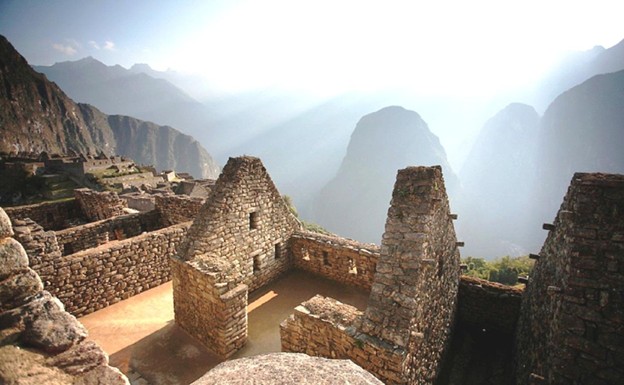
Top Temples to Visit for an Authentic Inca Experience
The Inca empirewas responsible for building a large number of temples dedicated to different deities. It's difficult to differentiate between which ones are more or less important, especially for visitors. No visitor will want to miss any of them. If we had to rank them, we would probably choose those dedicated to the main deities: the moon, the sun, and the earth. Below is a list of the temples we'll encounter.
- Temple of the Sun: The enclosure of the sun is the most important cult for the Incas. It is located in a high place, serving as a center of worship.
- Main Temple: It is one of the most exquisitely constructed temples, rarely seen.
- Temple of the Three Windows: A favorite spot for many, it represents heaven, earth, and the underworld.
- Intihuatana: A sacred stone used as a solar clock and spiritual energy point.
- Temple of the Condor: We see a condor in flight; the shapes of the rock resemble such an imposing bird.
- Royal Tomb (Mausoleum): The dead received offerings; some performed ritual ceremonies in this cave.
- Sacristy (Chamber of Ornaments): Historians believe that priests kept sacred instruments here.
- Temple of the Moon (Huayna Picchu): Mystical significance; moon worship involved important rituals.
- House of the High Priest: A strategically placed building with spiritual and political significance.
- Sacred Plaza: The heart of Machu Picchu’s ceremonial area, surrounded by major.
Must-See Sacred Sites Beyond the Main Temples
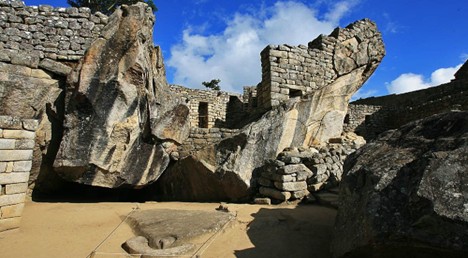
The Intihuatana stone is a must-see for its role as a solar clock and spiritual focal point. It helped Inca priests mark key astronomical events and align with the sun’s energy. Many visitors feel a deep spiritual connection while standing near this carved granite monument.
The Temple of the Condor uses natural rock formations to depict the powerful bird, sacred to the Incas. This site symbolizes the sky and the spirit world. Its unique design connects natural elements with spiritual meaning in a remarkable way.
The Royal Tomb holds great significance in the circuit, as historians confirm that this cavern structure was used to honor past generations. The dead were important to the Inca empire, never left aside, but rather considered a separate existence in the upper world.
It is no surprise that the Inca people were strongly attached to higher beliefs. The cosmos and nature were part of the spiritual atmosphere they conceived.
How Each Temple Reflects Inca Cosmology and Beliefs
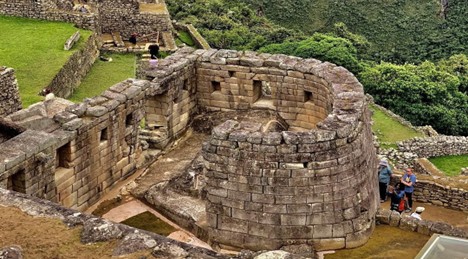
In Machu Picchu, one can perceive a strong connection with the immaterial. They conceived a city on top of a mountain with the full intention of raising their altars to the Gods. Seeking knowledge in the heavens, this is how they understood astronomy, few points of this kind exist in South America.
Seeking to honor their ancestors, the priests held special ritual ceremonies to dedicate to the dead. They held rituals to Mother Nature as the benefactor of food and life which even today these cultural traditions are practiced. Hence, the three worlds historians speak of are present. Many temples reflect these layers through their design and alignment. The use of three windows or levels represents the spiritual and material balance.
The Temple of the Sun symbolizes Hanan Pacha, where gods like Inti, the sun deity, reside. Its curved stone walls and sacred rock formations reflect solar worship. During solstices, sunlight enters through precise trapezoidal windows, illuminating key points inside.
The Temple of the Three Windows represents Kay Pacha and emphasizes the human connection to earth. Its three large openings symbolize life, order, and the physical journey. This temple speaks to the Inca people’s place in the cosmic order.
Symbolic Architecture in Machu Picchu’s Sacred Temples
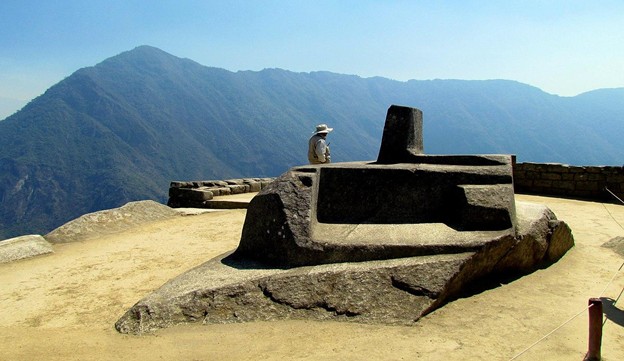
The Intihuatana stone functions as both an astronomical tool and a spiritual anchor. Inca priests used it to track the sun’s movement throughout the year. Its elevated position and carved base reflect unity between the heavens and the earth.
The Temple of the Moon embodies the spiritual messenger that links all realms of existence. Its design uses natural rock to form wings and a head. This integration of sculpture and symbolism shows deep respect for nature’s divine role.
Every detail in these temples reflects the Incas’ devotion to harmony, nature, and the divine. The architecture, layout, and materials served spiritual and symbolic purposes. Temples in Machu Picchu mountain remain living testaments to the Inca worldview.
Today, these sacred sites continue to inspire awe and curiosity among visitors. Their construction and meaning reveal a civilization rooted in balance and cosmic respect. This journey through Inca cosmology reminds travelers of humanity’s timeless connection with the universe.
Machu Picchu and all its magnificence demonstrates that it is everything that incas people considered as beauty, in other words "balanced". They embraced a lively balanced cosmos, the earthly and spiritual world always present as an indispensable source for the development of a culture that became one of the most important in the world.
Check Our Suggested Tours:
- From the Heart of the Jungle to the Sacred Mountain: A Luxury Expedition Through the Amazon & Ausangate 16d/15n
- Following the Path to the Sacred Sun Gate
- Peru By Belmond Tour
- Honeymoon In Peru - Peru Honeymoon Packages
- The Soul of Two Worlds: A Grand Amazon & Andes Expedition 14d/13n
- Family Adventure Tour

